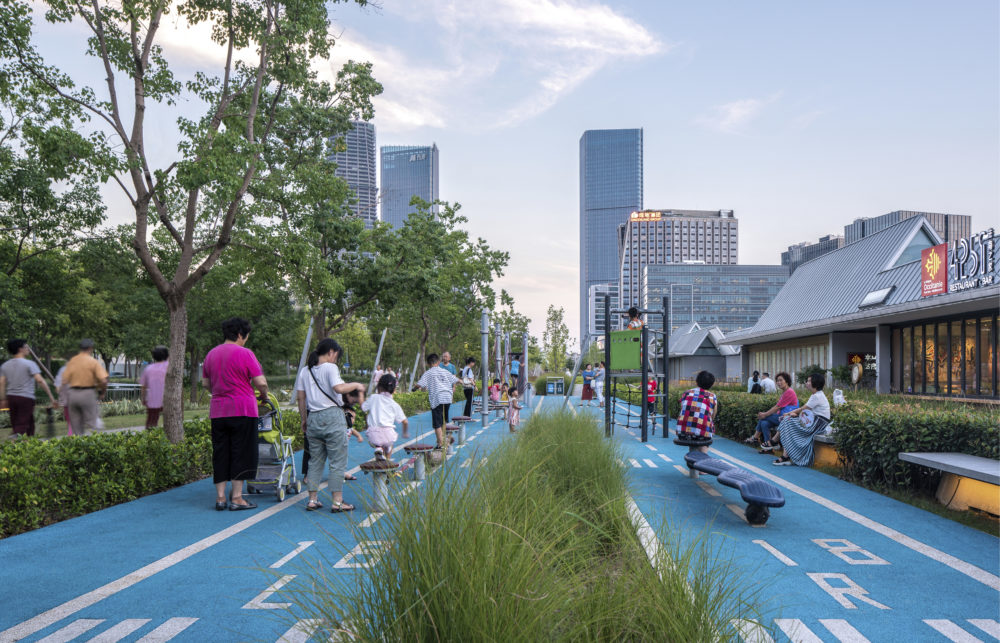
Xuhui Runway Park
Shanghai, China
 Sasaki
Sasaki
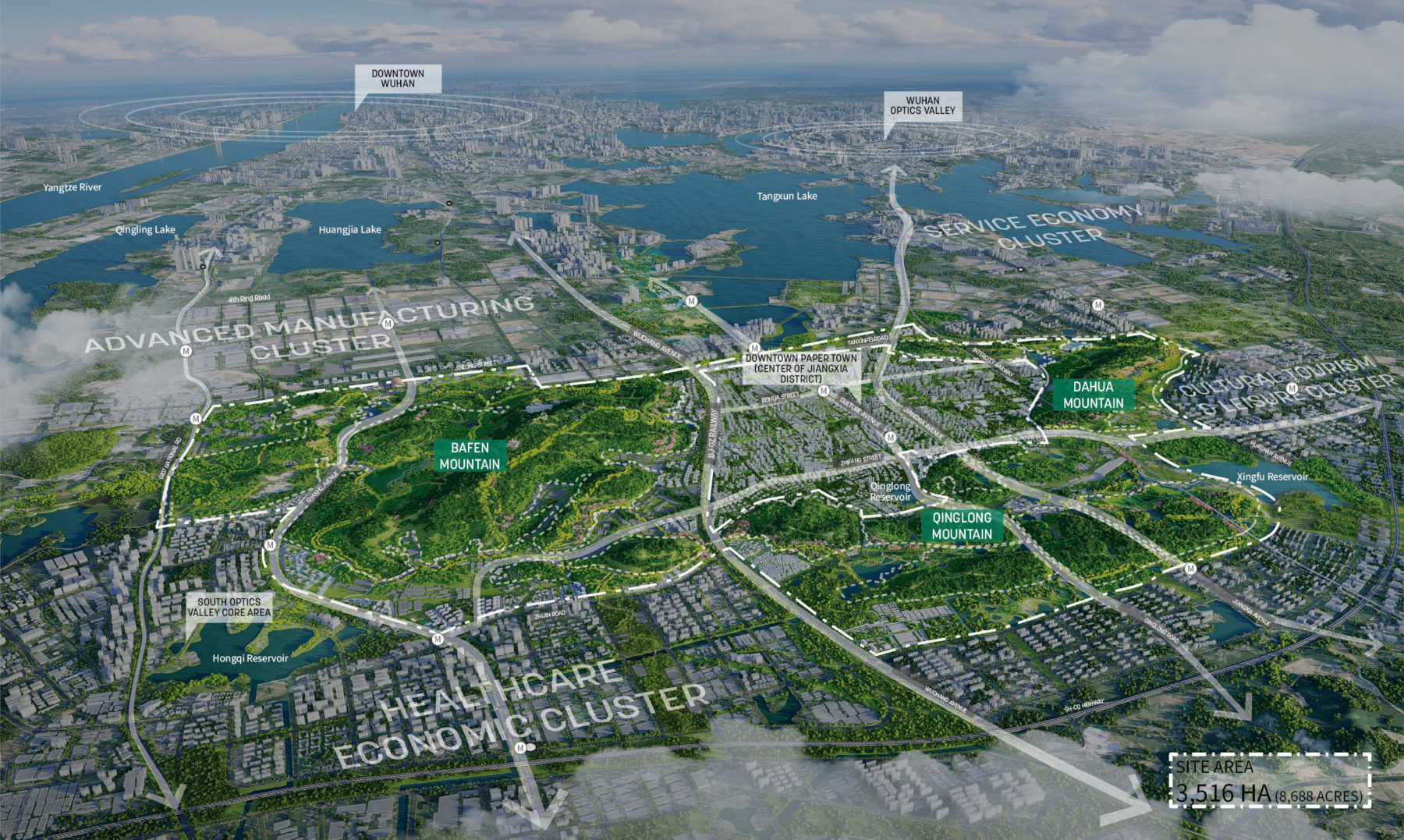
A novel mountain park complements the flat city of one thousand lakes
Wuhan is a city known for its booming innovation economy and for being situated amongst “one thousand lakes” in a flat riverplain. The Paper Town Mountains (PTM)—a long-neglected mountain area hugging the historic Paper Town on the periphery of Wuhan—has been identified as the new city gateway and the last jewel to complete Wuhan’s ambitious “green necklace”. Sasaki was engaged to create a vision to transform PTM into to a cultural, ecological, and recreational destination, as well as to foster innovation and redevelopment of the villages and post-industrial land along the foothills.
PTM currently consists of fragmented monoculture second growth woodlands and shrinking villages, scarred with disserted quarry sites visible from miles away. Even though it is a popular spot for sunset watching and overlooking the city, it lacks accessibility, amenities, and ecological value to serve the community needs and attract visitors. The historic Paper Town that the mountains surrounds is full of art and cultural heritages awaiting rediscovery.

Paper Town’s rich history dates back to 770 BC as an important node of early Chu culture and by 800 AD, it had become known for the arts of paper-making fostered by the growing Buddhism in central China
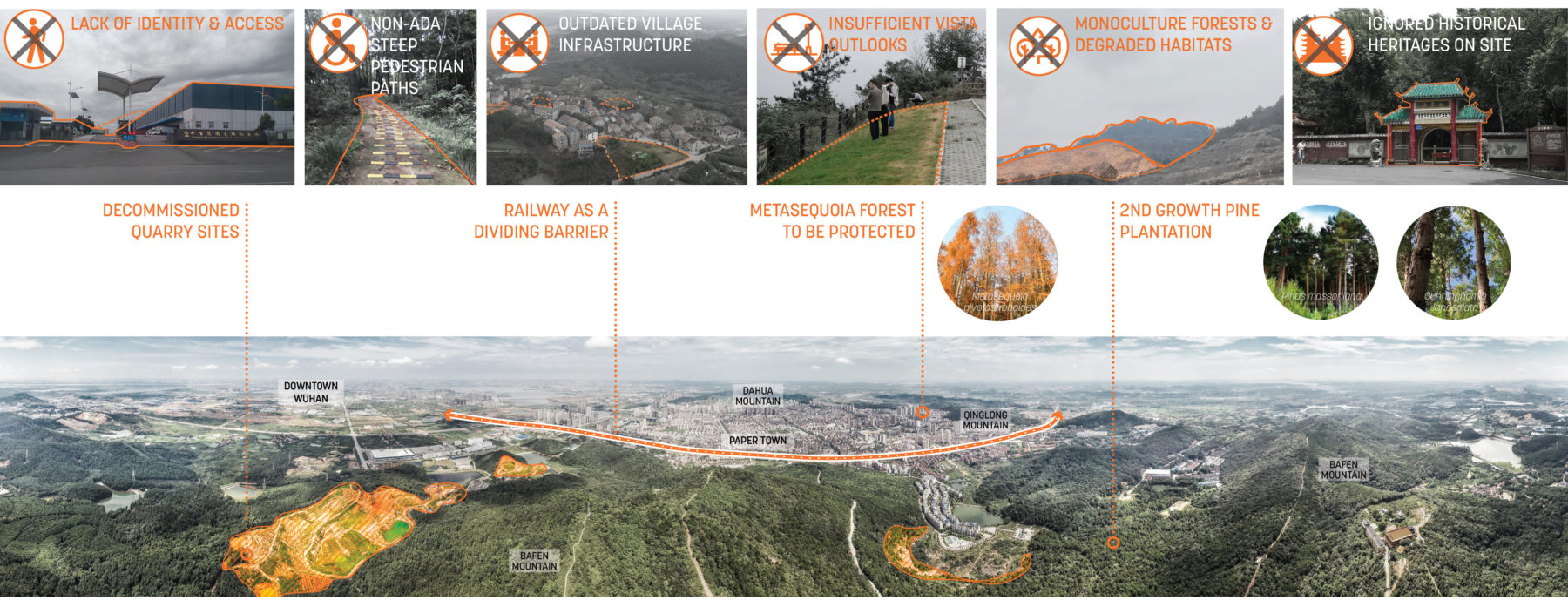
PTM is currently a degraded and neglected urban mountain area, fragmented by railway corridors, expressways, and disconnected trails, in one of the fastest-growing cities in the world
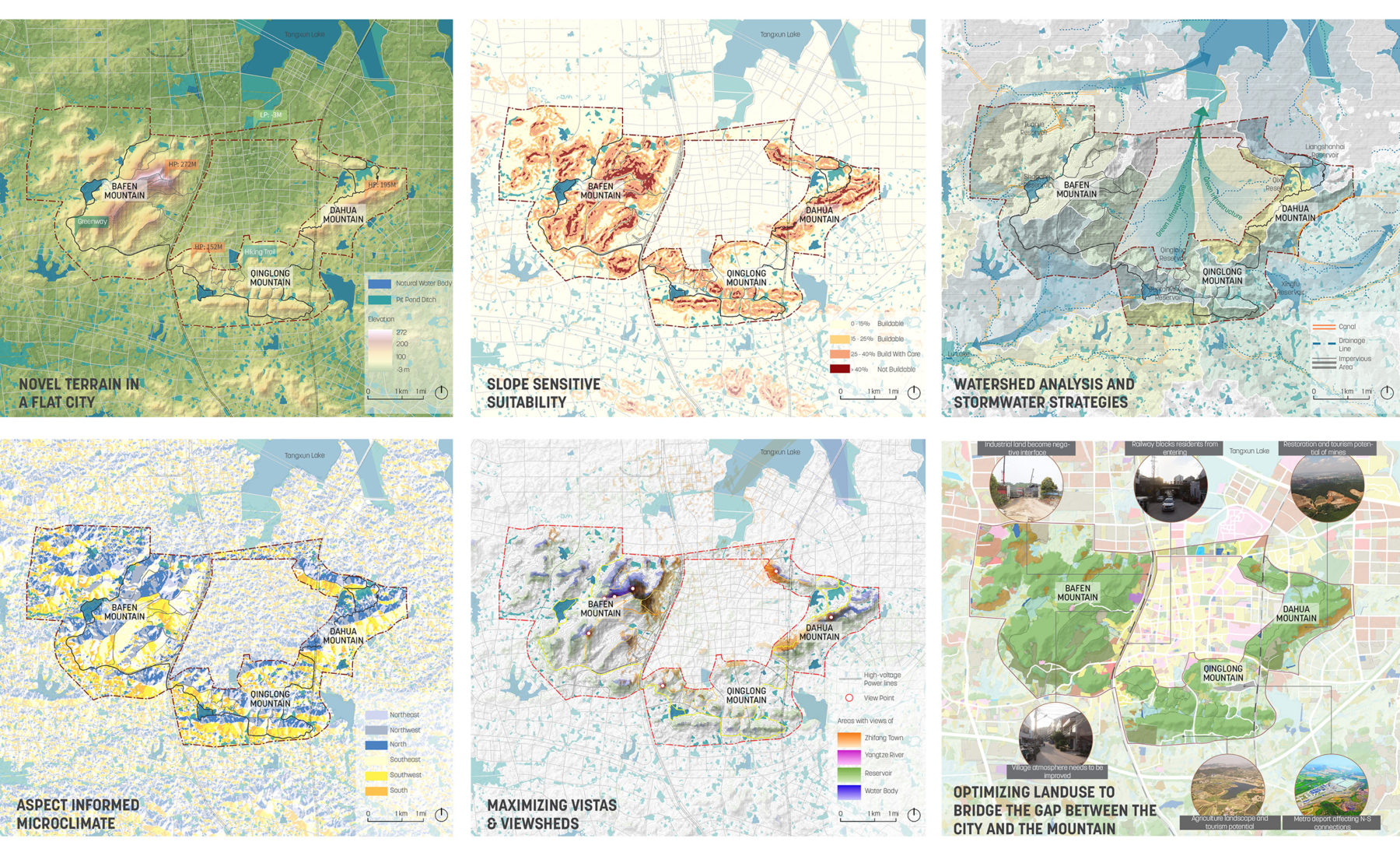
The team conducted a thorough multi-criteria analysis to ensure the master plan balances ecological restoration, regional stormwater management, recreational programs, and strategic urban infill development
The PTM park plan aims at creating an accessible, inclusive, and engaging urban mountain park while restoring the degraded ecology and habitat. At the outset, the design team conducted a highly iterative planning process and was informed by a thorough multi-criteria analysis which helped identify the most ecologically vulnerable and critical locations as restoration priorities. A hierarchy of different land covers were then paired with ecological intervention recommendations. Through managed succession, 24 square kilometers (5,821 acres) of diverse and complex forest will function as a substantial carbon sink of the rapidly growing city.
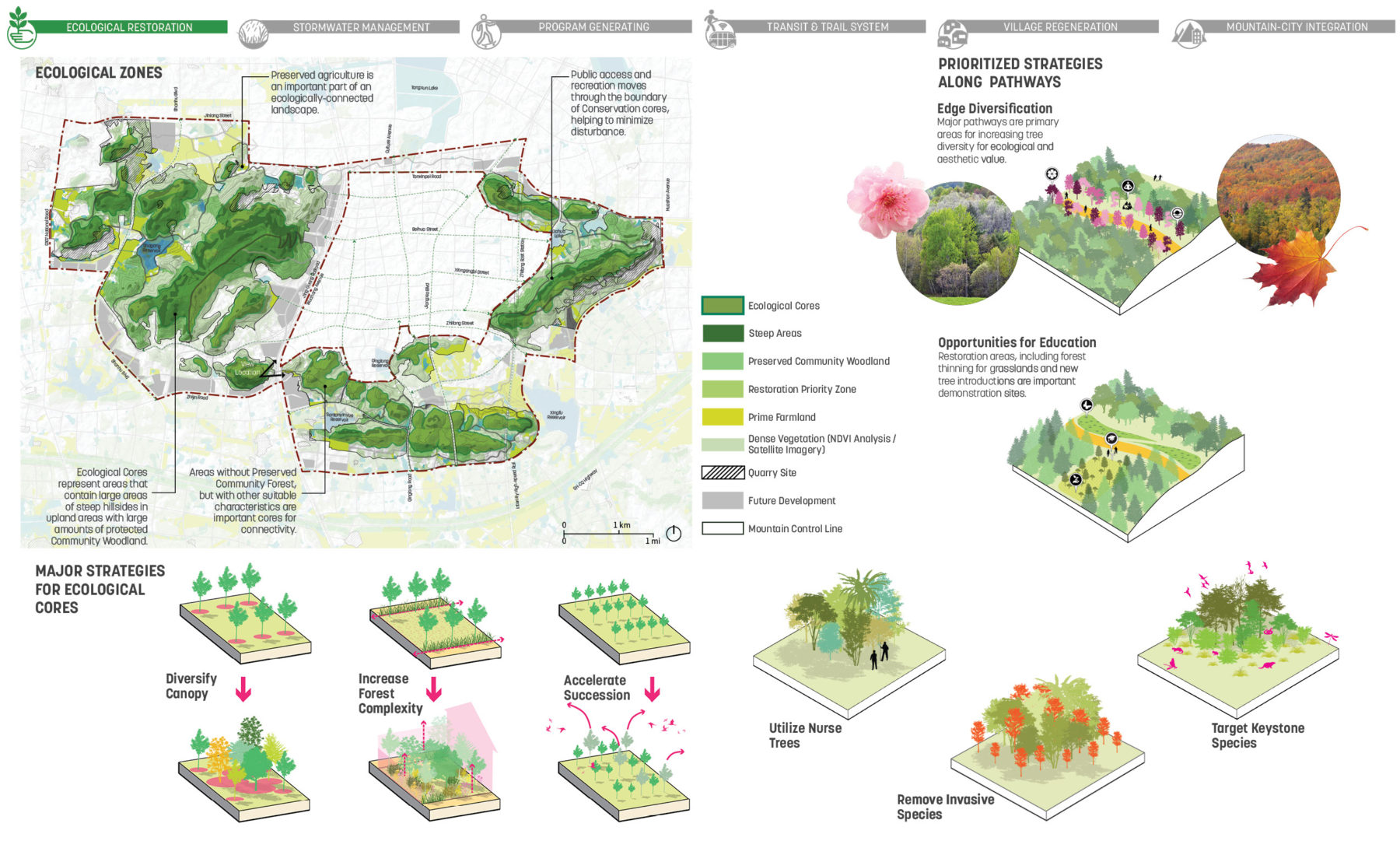
Prioritizing ecological sensitive areas for a holistic restoration via managed succession
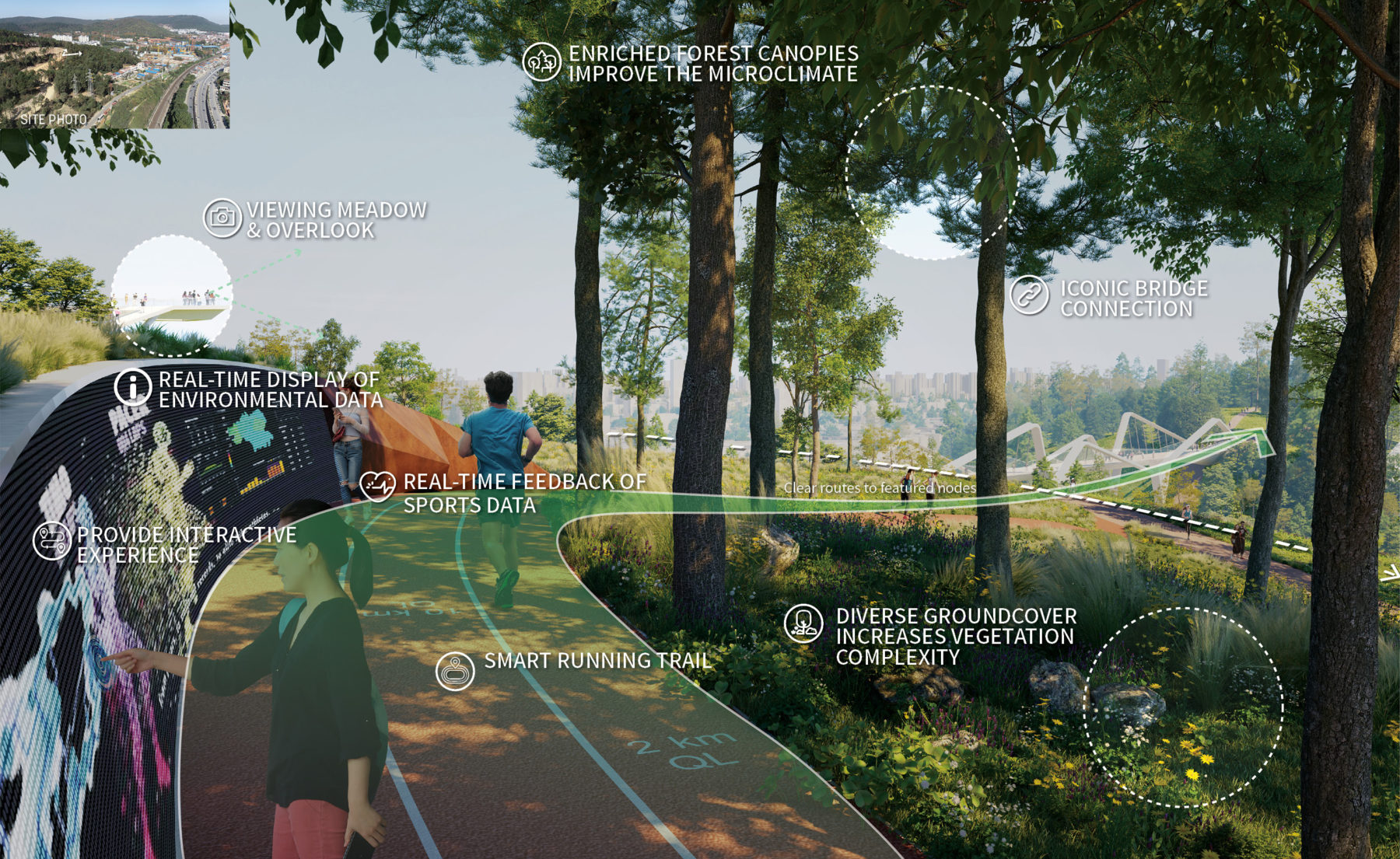
Creating continuous ecological and recreational experience. Digital technologies are integrated into some of the active trails that resonate well with the population in the surrounding innovation districts
The mountains also play a vital role in the regional hydrology as the headwater of multiple regional lakes. Any development and forest restoration in PTM will have a ripple effect downstream. The master plan not only focuses on the drainage networks within the study area but includes the regional hydrology to ensure that the plan, once fully implemented, will benefit the broader city context. The water-sensitive planning strategies are made visible to the public via environmental signage as a means of educating visitors about how each part of the landscape plays an integral role in the regional ecosystem.
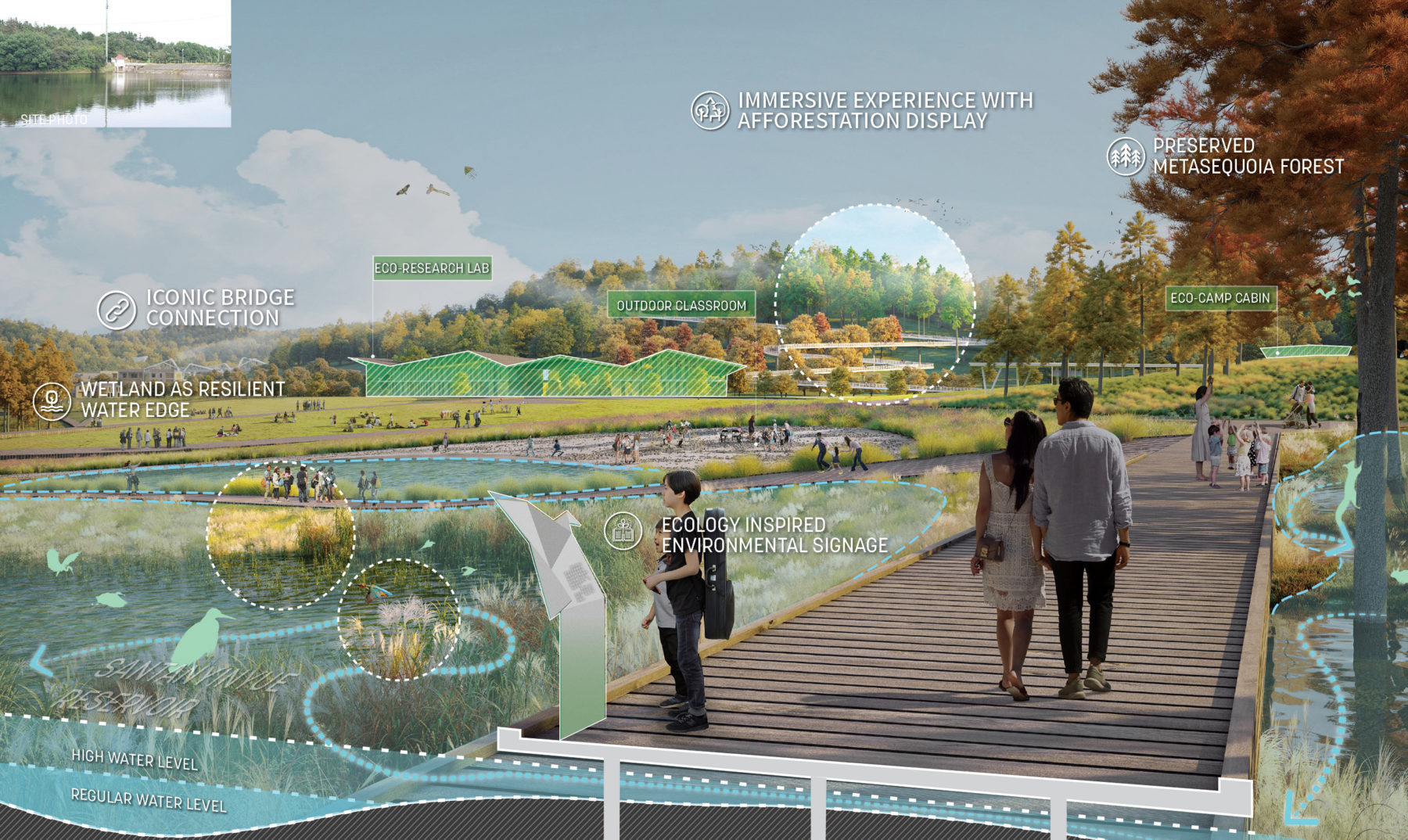
An educational mountain park for ecological literacy
One of the most significant interventions of the master plan is a 150 miles long extensive trail system that reconfigures and connects the currently fragmented trails. A hierarchy of the trails will accommodate a full range of outdoor activities, from competitive mountain biking to back-country hiking.
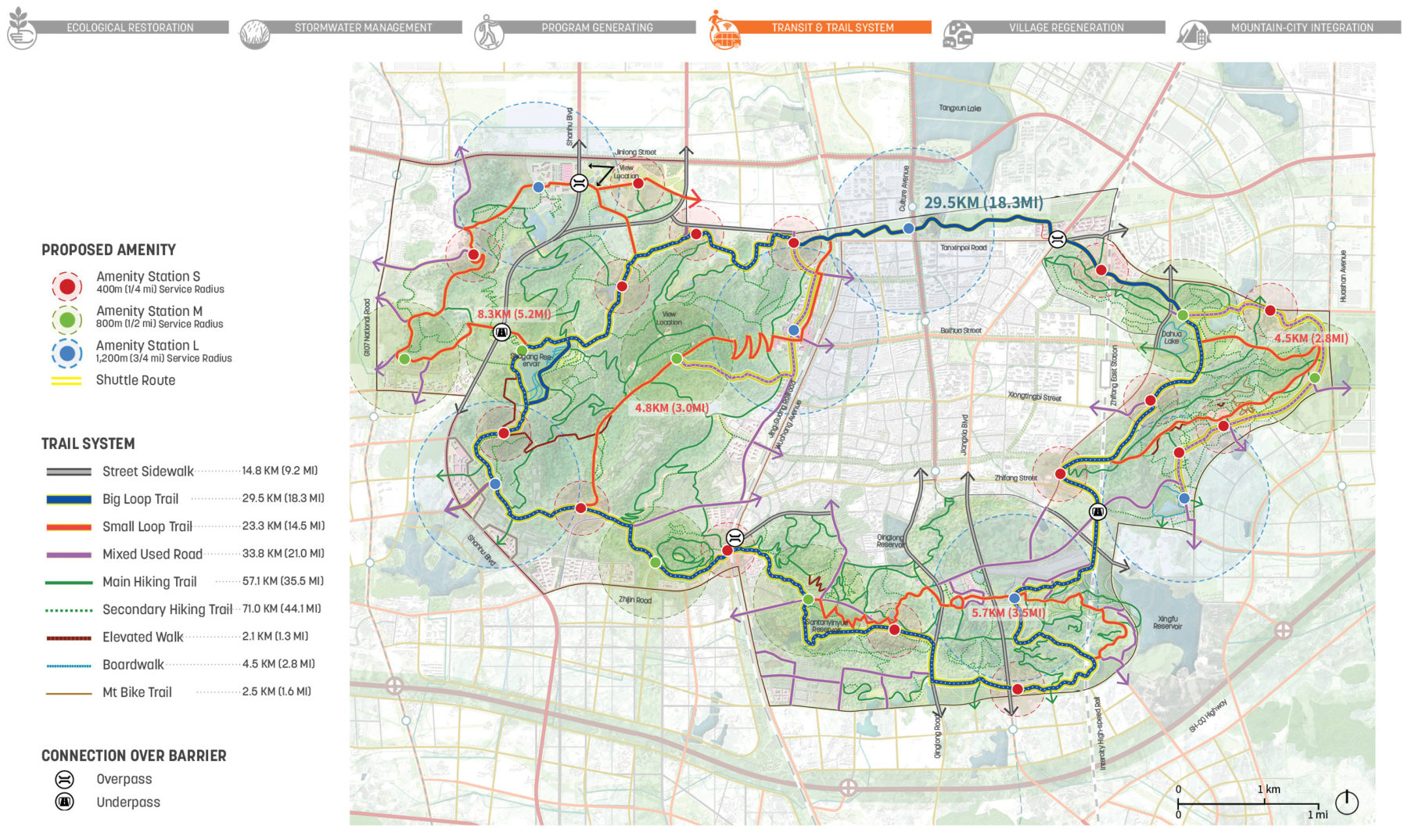
150 miles of extensive trails provide unlimited options for active and passive outdoor activities
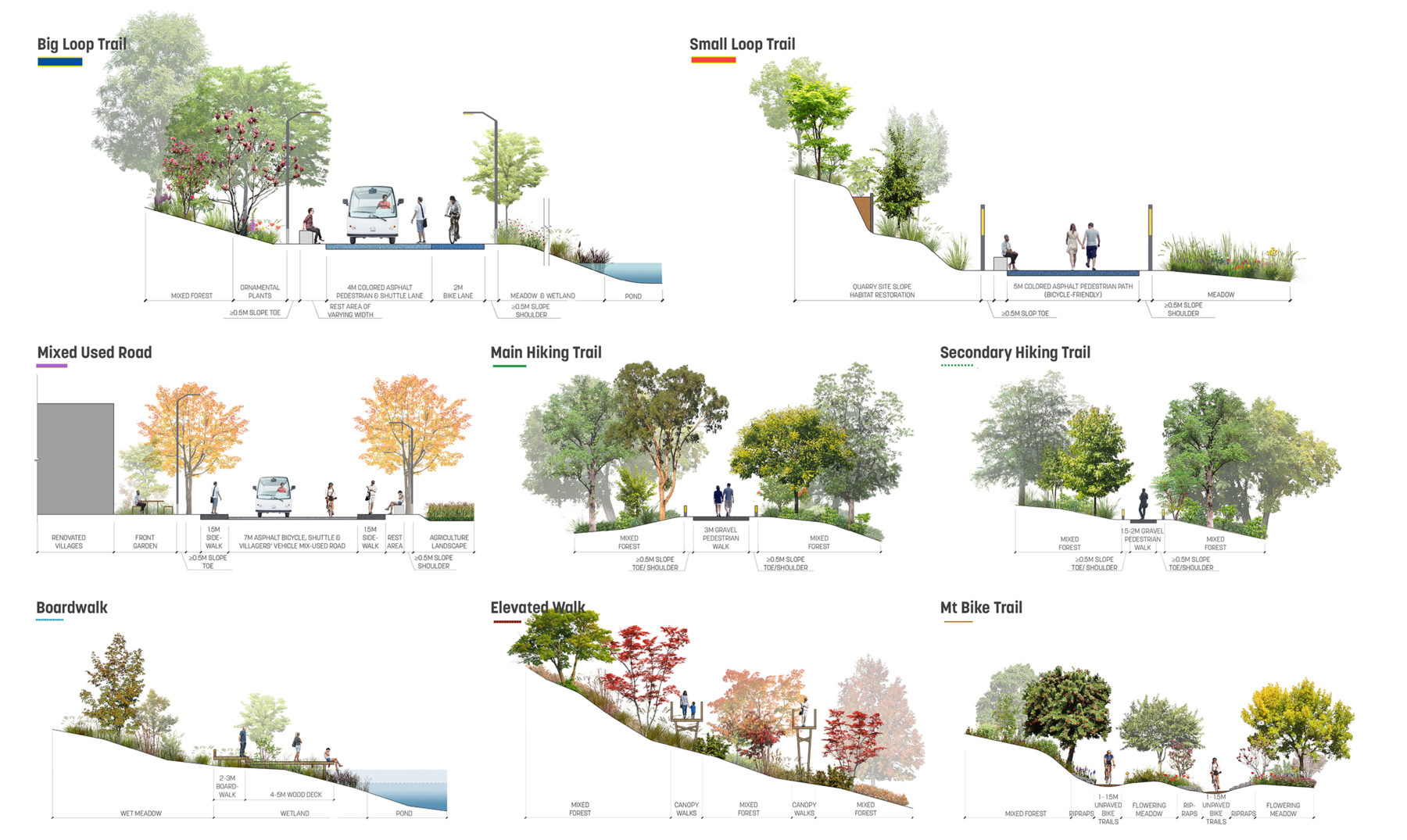
A wide range of trail types offer diverse and uninterrupted experiences
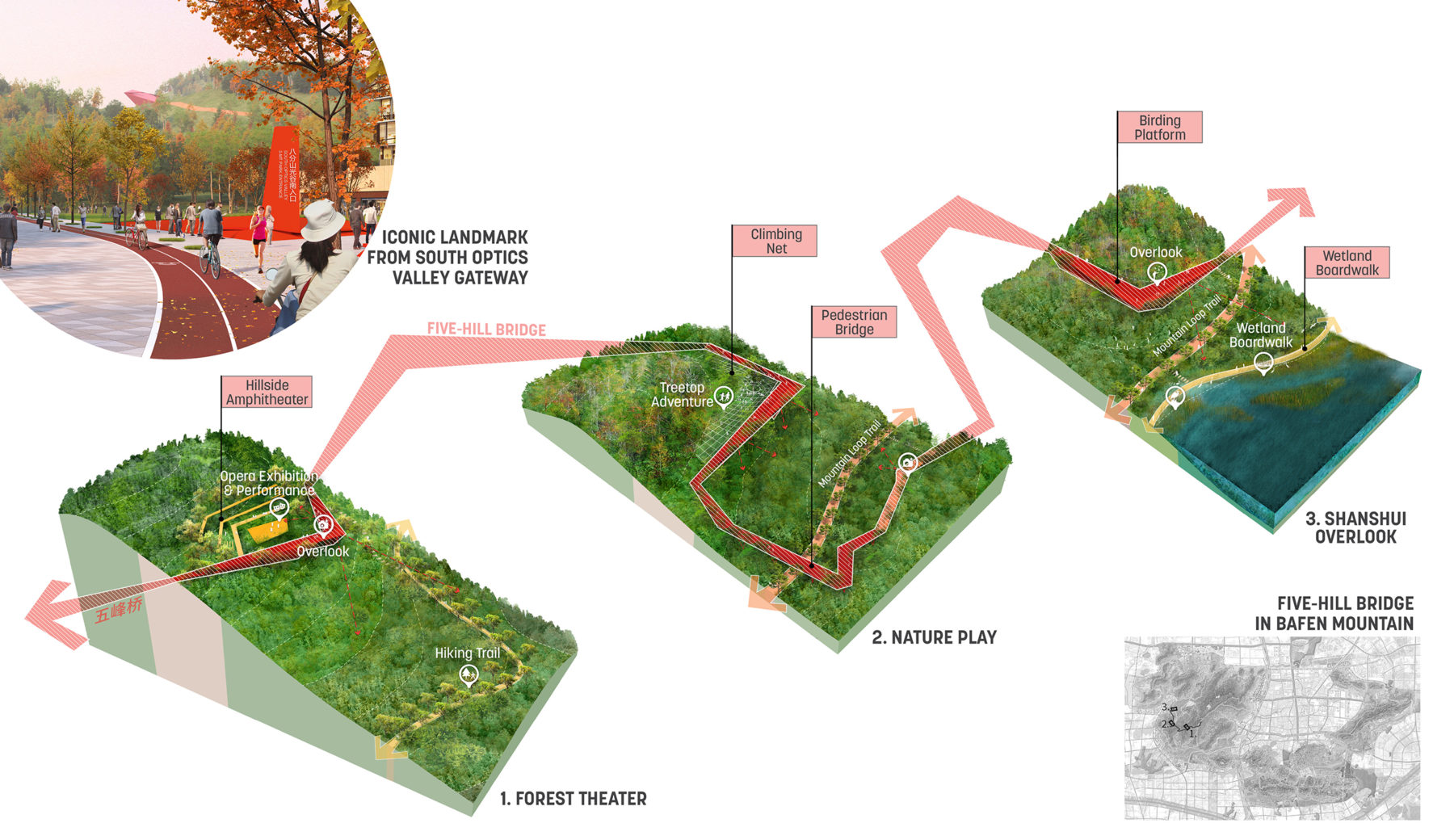
Leveraging rich terrains to create landmarks and unique trails
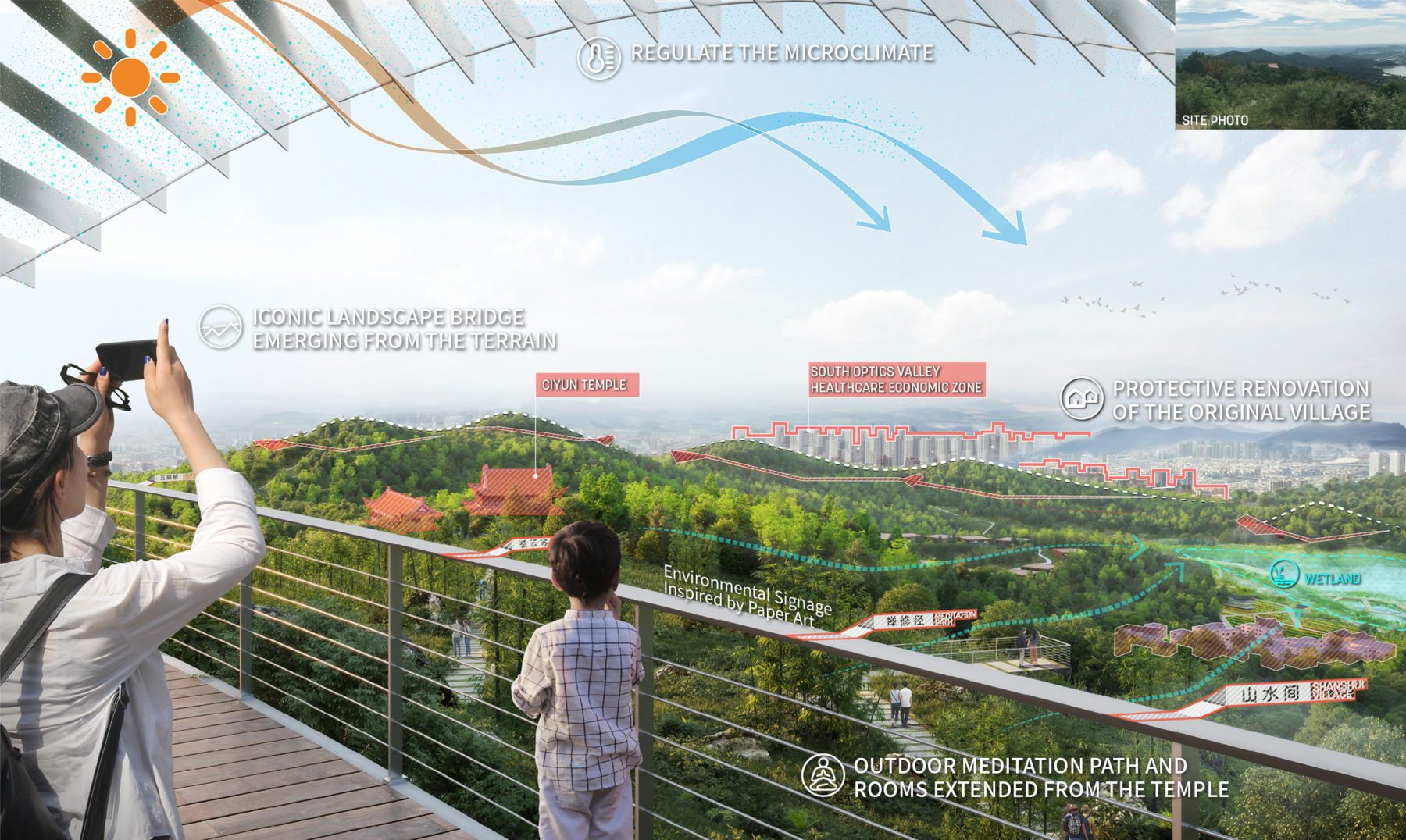
Mountain top vistas reveal new perspectives to the booming city
150 miles of extensive trails provide unlimited options for active and passive outdoor activities
A wide range of trail types offer diverse and uninterrupted experiences
Leveraging rich terrains to create landmarks and unique trails
Mountain top vistas reveal new perspectives to the booming city
Multiple abandoned quarries, currently seen as distracting eyesores, offer opportunities for creative solutions to introduce unique outdoor programs and trail connections on heavily disturbed and steep slopes. Coupled with ecological restoration, the most accessible parts of these sites become sculpture parks and extreme sports parks, not only acknowledging the site’s mining history but also helping reactivate the PTM’s urban frontage.
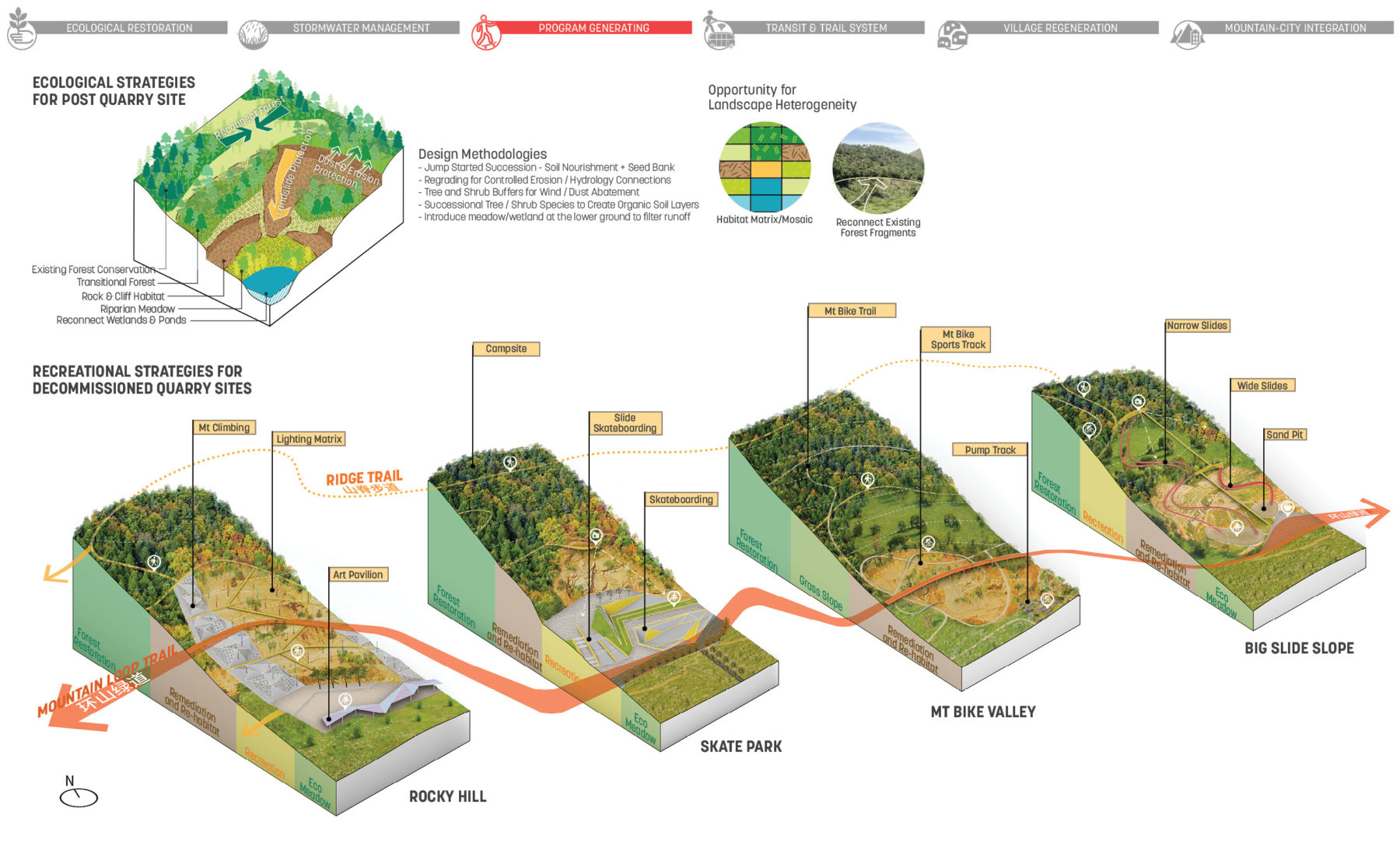
Taking advantage of degraded sites for sports and active recreational programs
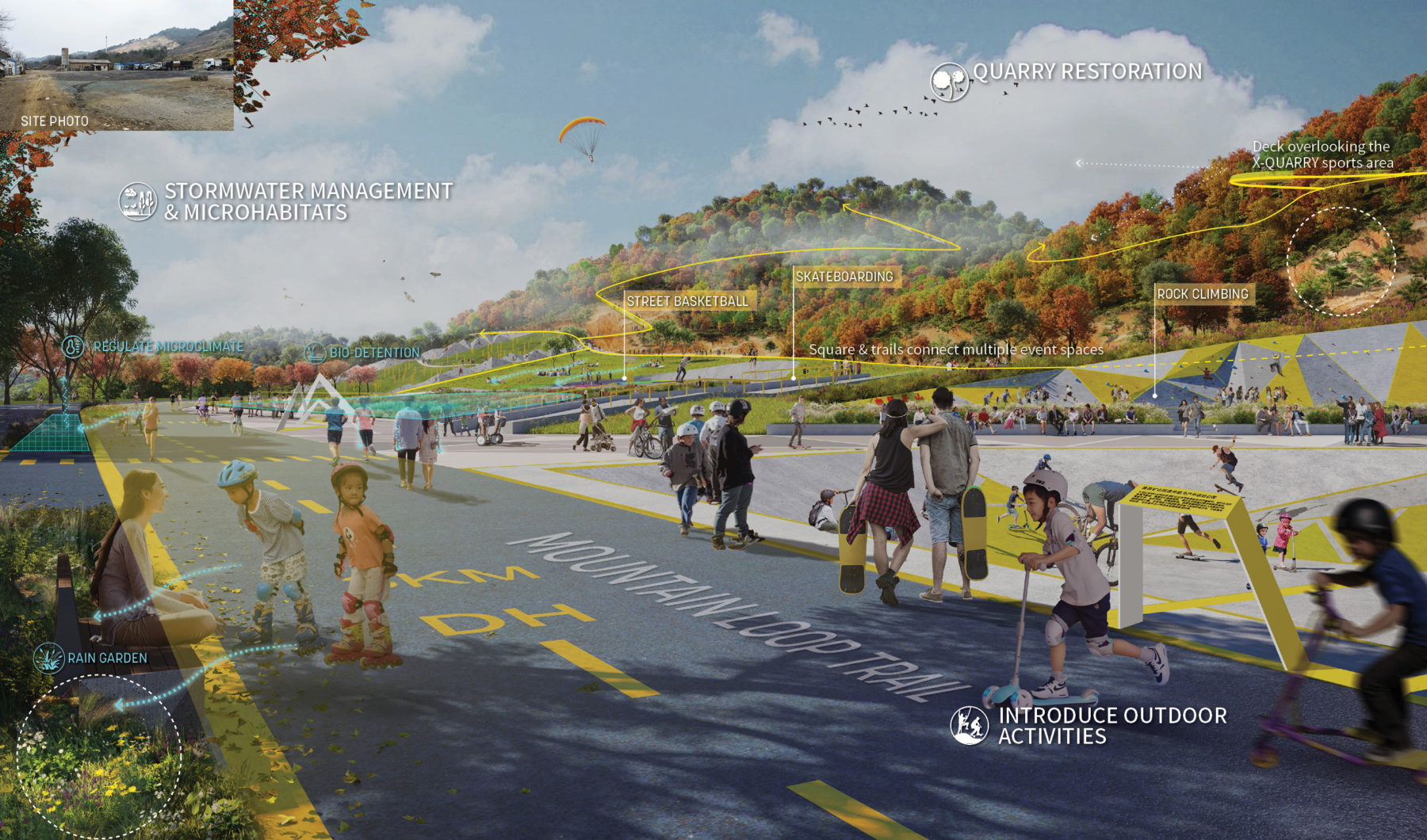
A reactivated and welcoming sports park at the foothills
Existing villages in the mountains face increasing challenges of a shrinking population as younger generations move to the city for more opportunities. The team carefully surveyed the condition of the villages before proposing surgical community redevelopment. Besides physical improvements, the plan also focuses on equity, inclusion, and economic sustainability by introducing diverse income opportunities to retain and attract young residents.
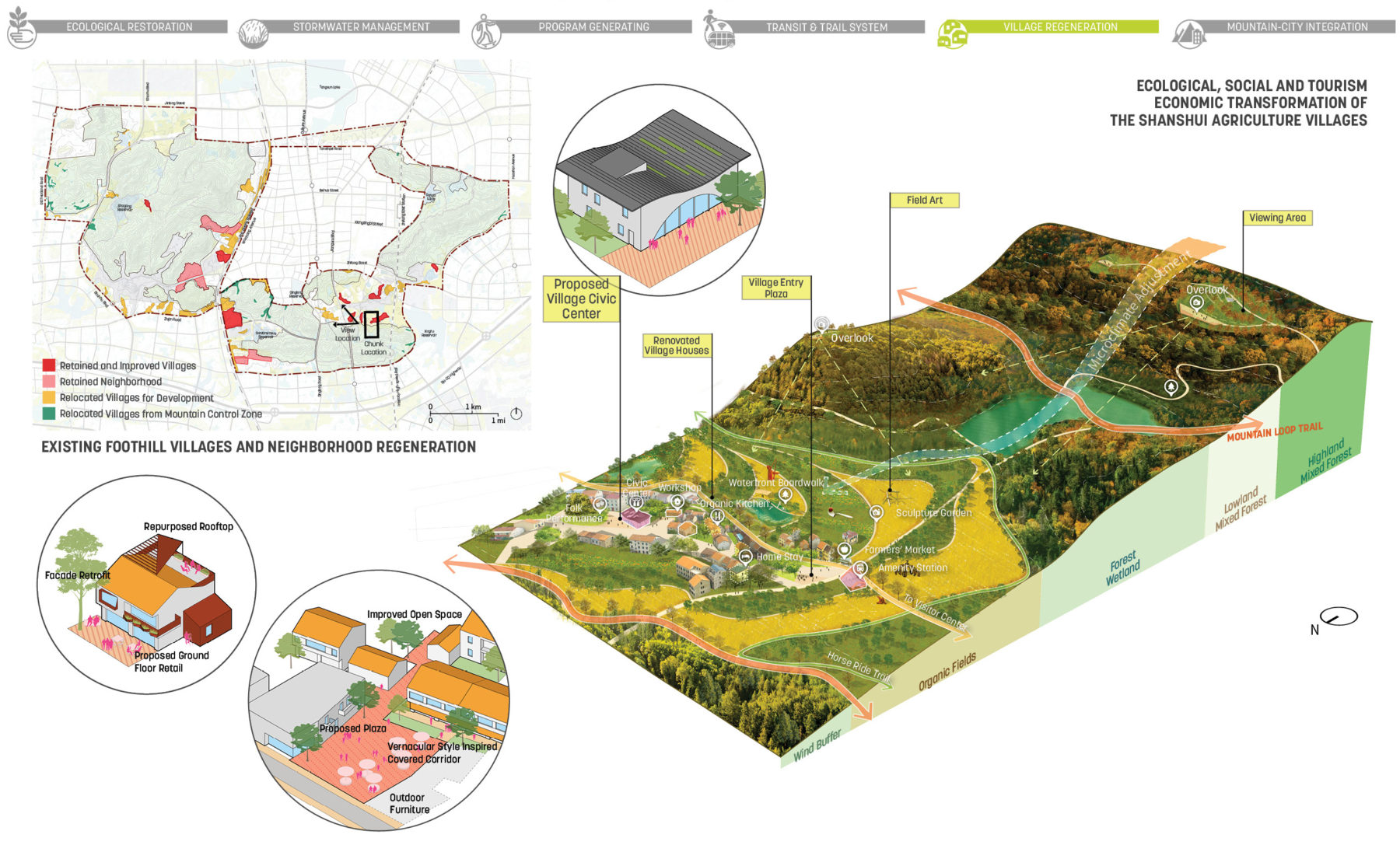
Village preservation and renovation focus on equity, inclusion, and economic sustainability
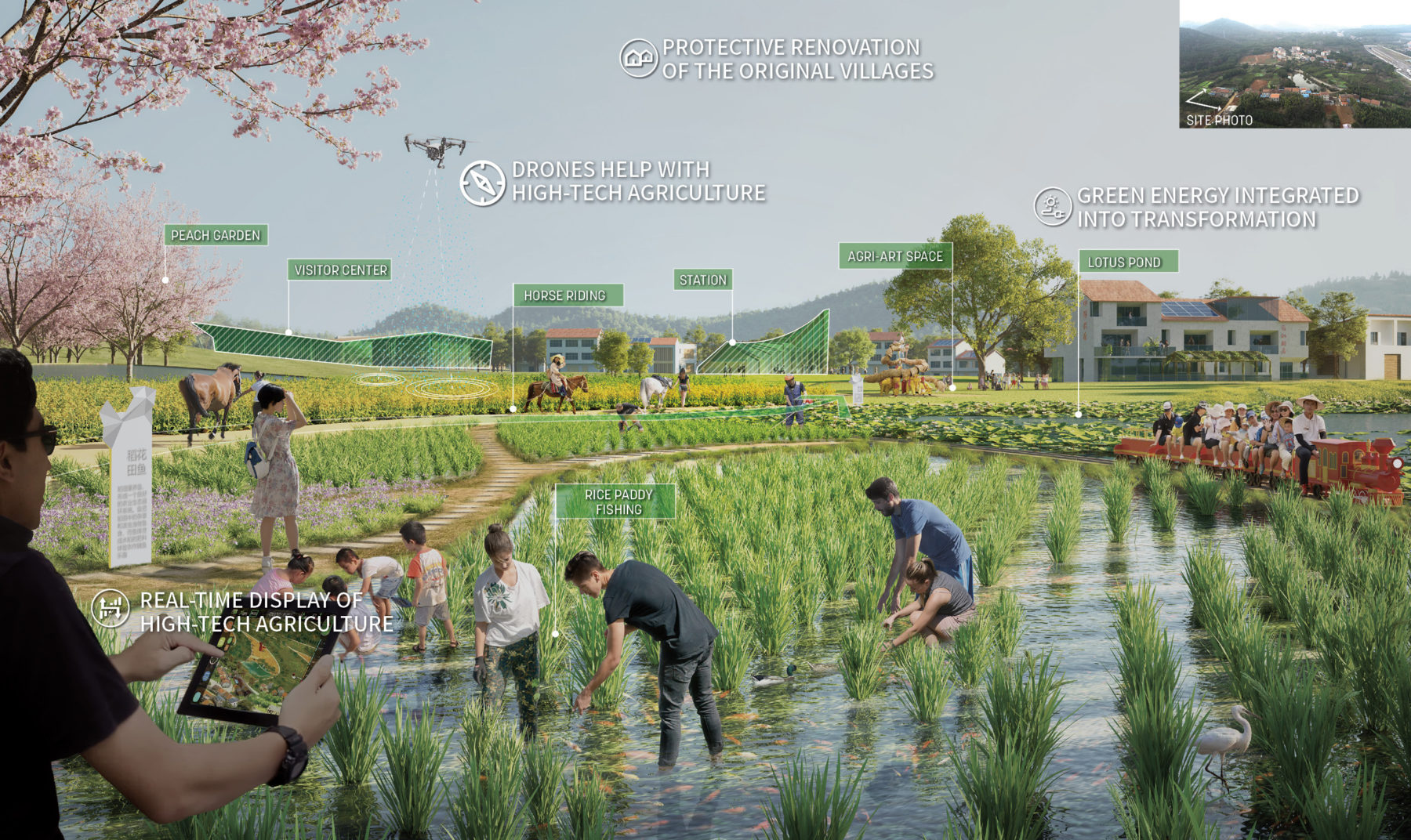
Tourism, urban retreats, and environmental education attract visitors as well as bring service-based and circular economies to the villages
Strategic infill developments along the foothills further stitch together the urban fabric and the PTM park where physical and visual barriers such as the railway corridor have long divided the mountains from the historic town.
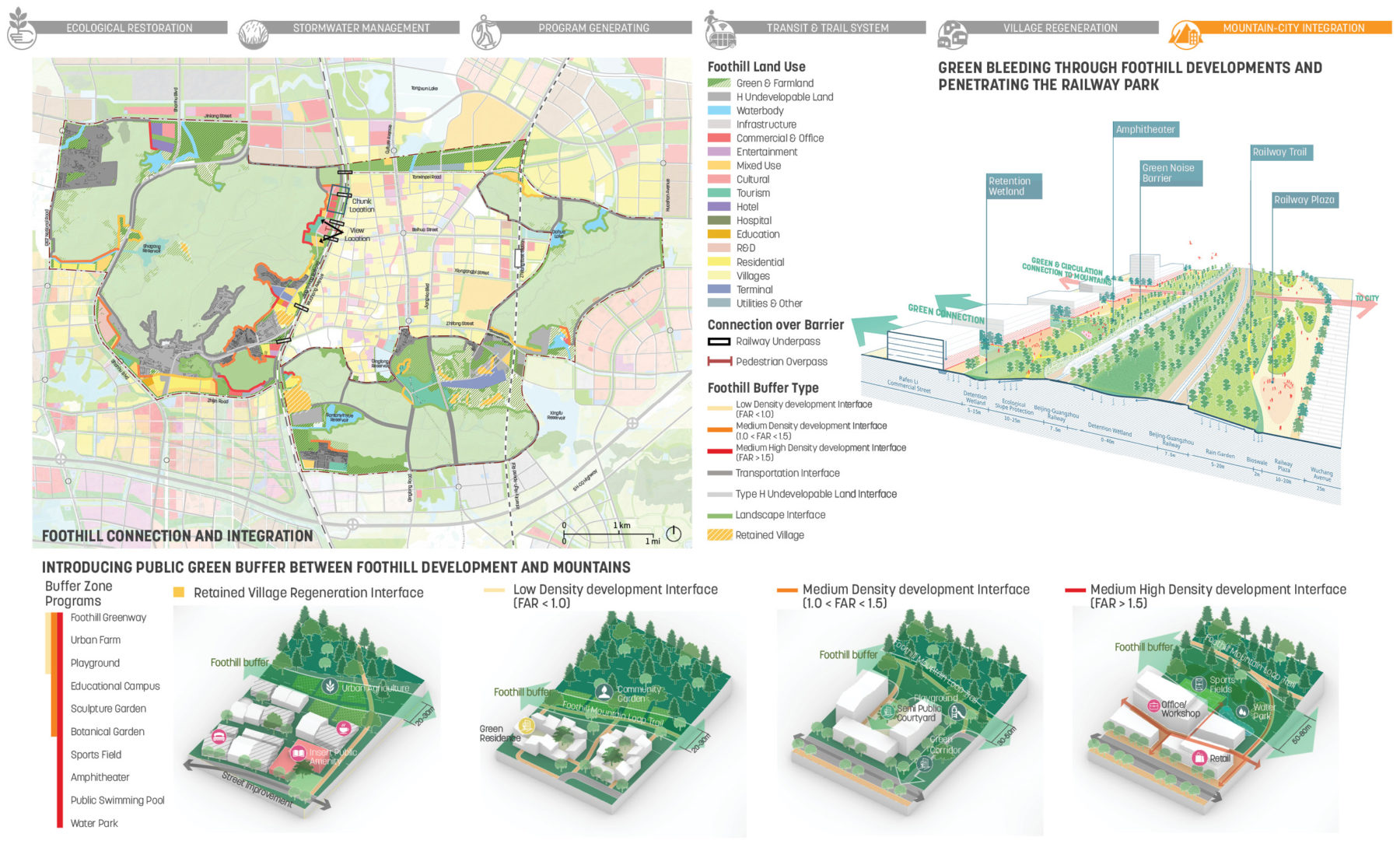
Strategic infill development to bridge the gap between the city and the mountains
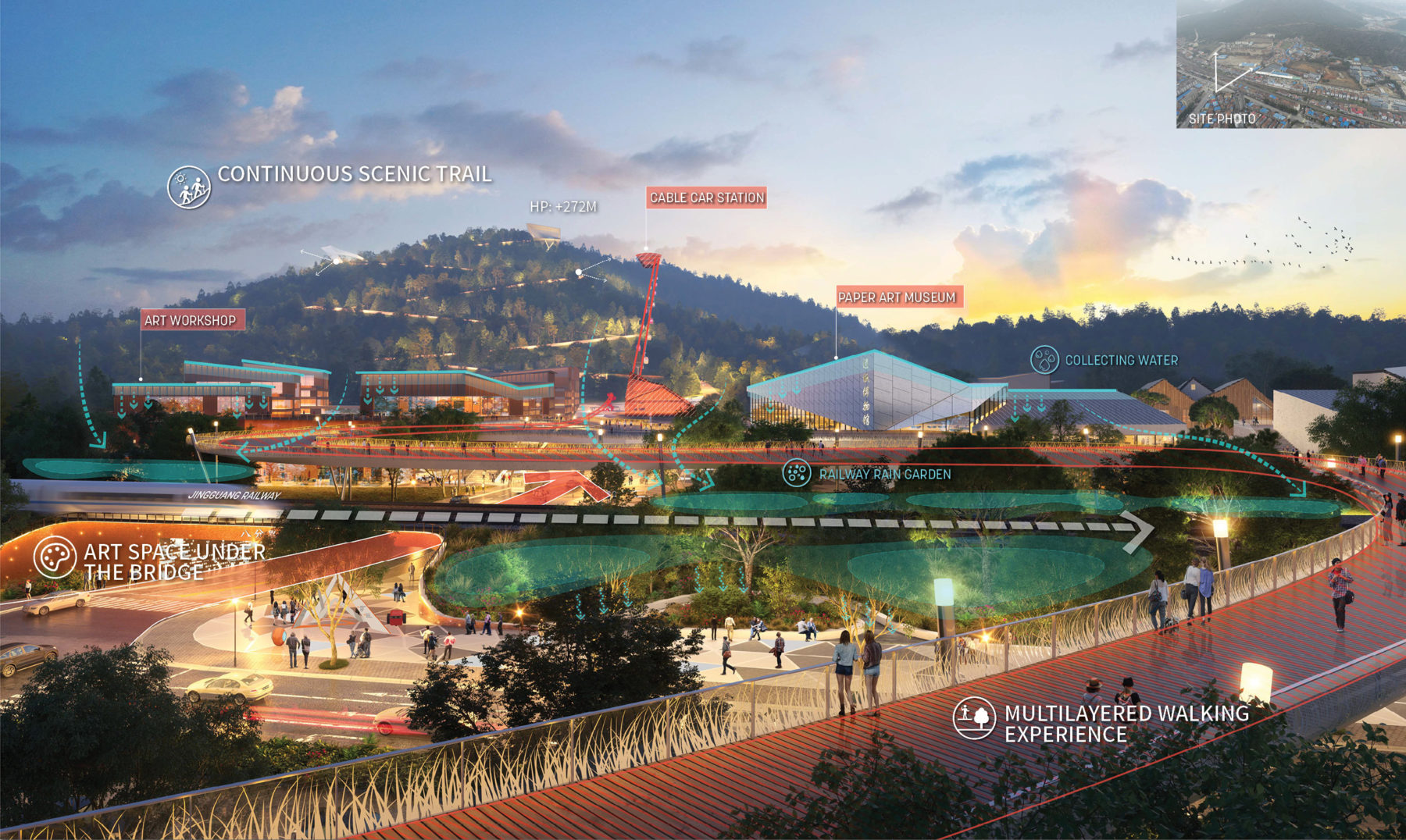
A new mixed-use development straddling both sides of the railway corridor gives PTM a new identity and gateway from the historic town
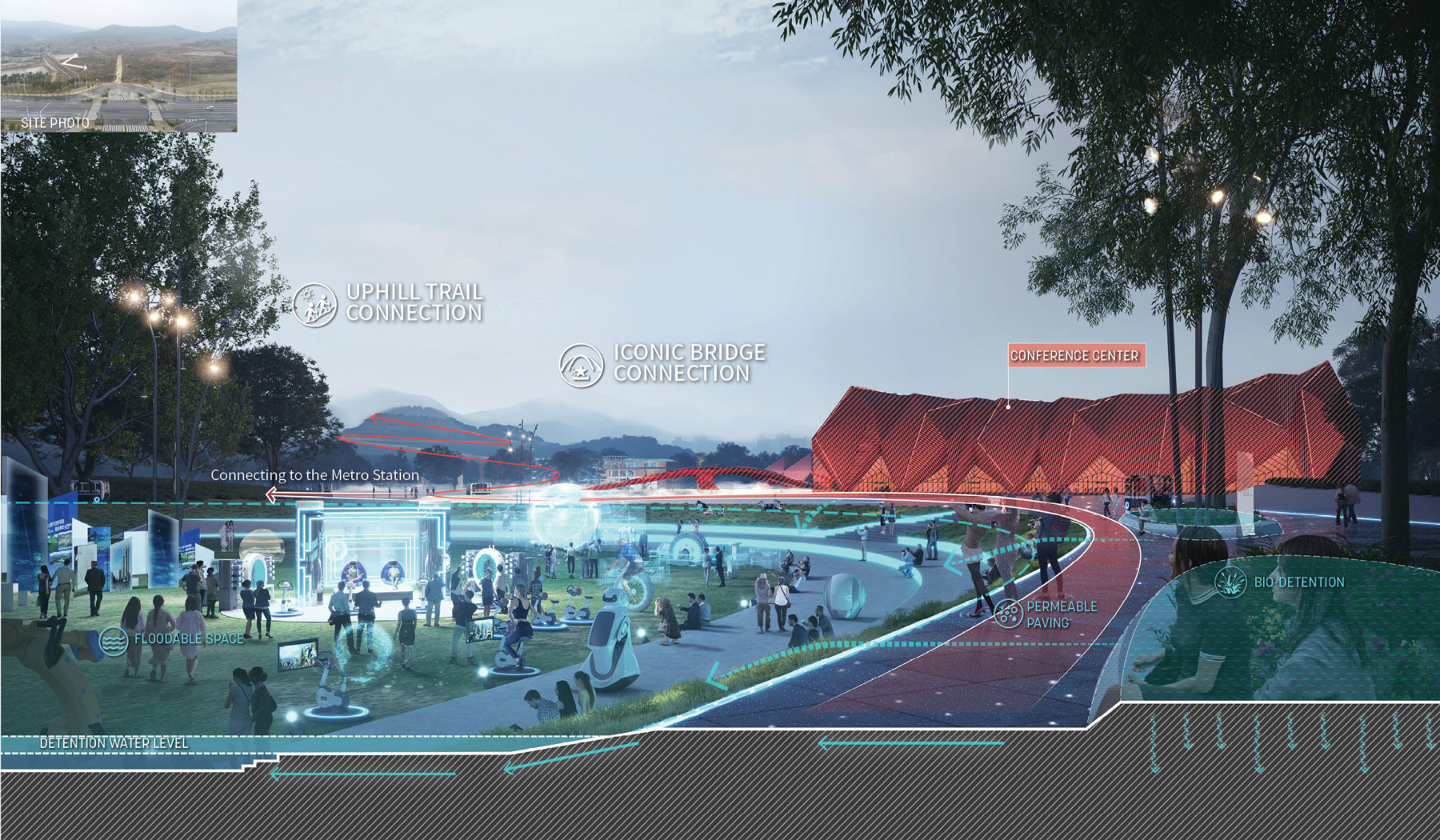
On the opposite side of the park, a foothill conference center and outdoor event lawn connect the mountains to the adjacent booming healthcare economic zone
Traveling through the PTM area, on foot, bike, or a shuttle, people will come to appreciate the restored ecology and rich culture that proudly manifests the long history of the city. Once atop the mountains, visitors and Wuhan residents will rediscover new perspectives of this booming city and its burgeoning skyline.
For more information contact Tao Zhang.